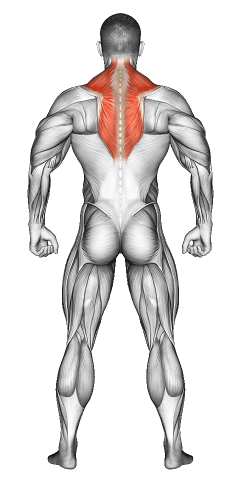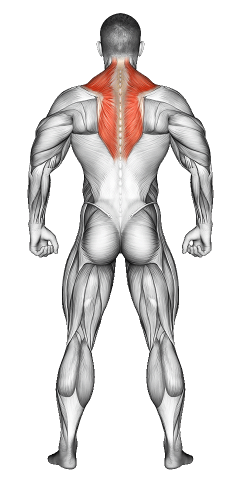Barbell Front Raise: Video Tutorial & Exercise Guide

Written By: Claude Michael
Updated: Oct 13, 2024
| Workout | Barbell Front Raise |
| Primary Muscle Group | Shoulders |
| Secondary Muscle Group | Abs, Traps |
| Equipment Required | Barbell |
| Force Type | Pull |
| Mechanics | Isolation |
| Exercise Type | Strength |
| Difficulty | Intermediate |
Barbell Front Raise: Video Tutorial & Exercise Guide
- 1.Barbell Front Raise: Muscle Groups
- -1.1Primary Muscle Group
- -1.2Secondary Muscle Group
- 2.Barbell Front Raise: Step-by-Step Guide
- 3.Barbell Front Raise: Overview
- 4.Barbell Front Raise: Benefits
- 5.Barbell Front Raise: Pro Tips & Advanced Techniques
- 6.Barbell Front Raise: Progression Plan
- 7.Barbell Front Raise: Frequently Asked Questions (FAQs)
Secondary Muscles Group

Abs

Traps
Barbell Front Raise: Step-by-Step Guide
- Step 1: Stand upright with your feet shoulder-width apart, holding a barbell with both hands. Use an overhand grip (palms facing your body), and let the barbell rest against your thighs.
- Step 2: Keep your arms straight but not locked, and engage your core. This is your starting position.
- Step 3: Raise the barbell in front of you, keeping your arms extended, until it reaches shoulder height. Ensure that your shoulders, not your arms, are doing the lifting.
- Step 4: Pause briefly at the top, then slowly lower the barbell back down to the starting position in a controlled manner.
- Step 5: Repeat for the desired number of reps, focusing on control and form throughout the movement.
Barbell Front Raise: Overview
The Barbell Front Raise is a shoulder isolation exercise that targets the anterior (front) deltoid muscles. This movement is performed by raising a barbell in front of your body to shoulder height, engaging the shoulders and helping to improve strength and definition in the front delts.
This exercise is great for building shoulder size and strength, especially in the anterior delts, and is commonly included in upper body and shoulder workouts. It’s a simple yet effective exercise for all fitness levels.
Barbell Front Raises: Benefits
Barbell Front Raises effectively isolate the front delts, helping to build strength and muscle in the shoulders. This exercise improves shoulder aesthetics, creating a more defined and rounded shoulder appearance, which is important for overall upper body development.
It also enhances shoulder strength for pushing movements, such as overhead presses and bench presses, by targeting the anterior delts. Additionally, the controlled motion helps improve shoulder stability and control, reducing the risk of injury in other shoulder exercises.
Barbell Front Raise: Pro Tips & Advanced Techniques
Keep your core engaged throughout the exercise to prevent your lower back from arching. Avoid swinging the barbell or using momentum to lift the weight. Focus on slow, controlled movements to fully engage your shoulders. To increase the intensity, slow down the lowering phase of the movement or add a slight pause at the top. You can also use a slightly wider grip to change the focus on the shoulder muscles.
Barbell Front Raises: Progression Plan
Beginner
Intermediate
Advanced
Barbell Front Raise: Frequently Asked Questions (FAQs)
What muscles do Barbell Front Raises target?
+Barbell Front Raises primarily target the anterior deltoids (front shoulders). They also engage the upper chest, trapezius, and core for stability.
Are Barbell Front Raises suitable for beginners?
+Yes, Barbell Front Raises are suitable for beginners, but it’s important to start with a lighter barbell to master the form and avoid using momentum to lift the weight.
How often should I perform Barbell Front Raises?
+Incorporate Barbell Front Raises into your shoulder or upper body workout routine 1-2 times per week, allowing time for recovery between sessions.
What common mistakes should I avoid?
+Avoid swinging the barbell or using momentum to lift the weight. Keep your core engaged to prevent arching your back, and focus on controlled movements for proper shoulder engagement.
Can I use a wider grip for Barbell Front Raises?
+Yes, using a slightly wider grip can change the focus on your shoulder muscles. Experimenting with different grips can help target different areas of the deltoids.
Share
Don’t Wish for It, Work for It – Join the FlexXP Newsletter Today!
Thank you for signing up for the FlexXP Newsletter!
This site is protected and the Google Privacy Policy and Terms of Service apply.
